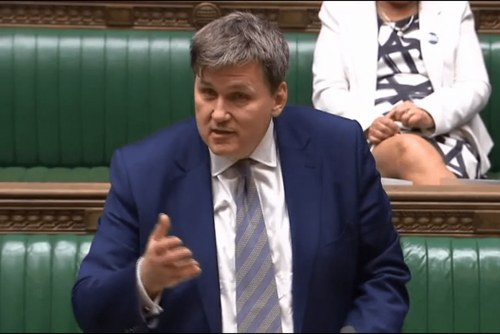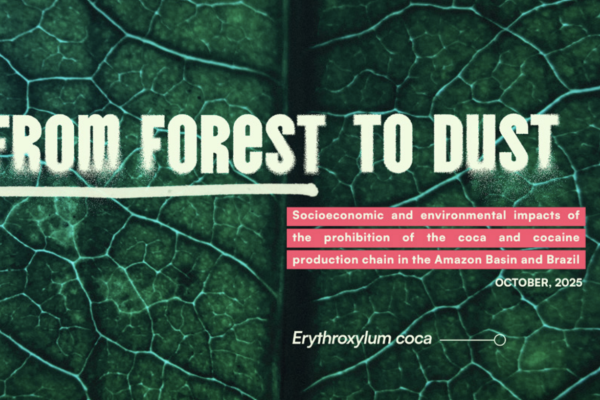22nd December 2021
The UK Government’s public position on cannabis legalisation has barely changed in 50 years, essentially that cannabis is a dangerous drug and should remain illegal to prevent or deter its use. This emphasis on health risks, particularly for youth, has been a continuous thread in the history of global prohibition.
Yet, as legalisation has moved decisively from theory to reality, with 18 US states now having legally regulated access for non-medical adult use, along with Canada and Uruguay (and, just this week, Malta), the apocalyptic predictions from opponents of reform have failed to materialise, particularly in relation to health risks and youth use (which has, in most instances, plateaued or trended downwards). So it is interesting to see that the UK Government’s arguments in parliamentary debates appear to be shifting. As parliamentary calls for reform have increased in frequency this year the justice minister who holds the drug policy brief, Kit Malthouse, has instead been suggesting that legal regulation has failed, particularly in efforts to curb the illegal market.
In the debate on the Misuse of Drugs Act on the 17th June he stated:
“There have been quite a lot of calls for legalisation of cannabis. I point him to the Canadian experience … rather than legalisation producing a reduction in the illegal sector or its elimination, that business, like any other, has adapted to competition, producing a stronger product more cheaply, provided more conveniently, and it still exists in Canada … in Amsterdam, where consumption has been liberal, shall we say, for some time, I am not convinced that criminal gangs are not still pursuing their trade.”
In the debate on the new drugs strategy on December 6th, his attention shifted to California:
“We will look at evidence from around the world. I have to tell the hon. Gentleman, however, that it is widely accepted that the legalisation of cannabis in California has been a disaster.
A point restated most recently on the 10th December debate on the Misuse of Drugs Act
“I understand that the hon. Gentleman and his colleagues often push for the legalisation of cannabis, but I point him to the mixed experience of various parts of the world that have done so, not least California, where it is widely agreed to have been a disaster.”
This new opposition line needs to be challenged; how accurate are these statements, and how relevant is the analysis of these very different regimes and historical contexts to potential developments in the UK? This will be particularly important if such arguments are increasingly deployed, as others crumble away under closer public scrutiny.
So, first to Amsterdam. The suggestion that criminal gangs are ‘still pursuing their trade’ in the Netherlands is quite correct, but reflects a misunderstanding of the Dutch situation in which cannabis supply remains nominally illegal but takes place within a formally tolerated system of licensed cannabis ‘coffee shops’. Under what even Dutch policy makers concede is a paradoxical situation, the so-called ‘back door problem’ means that while sales to consumers are tolerated from the coffee shops' front door, the supply via the back door remains from illegal production and smuggling networks that do, inevitably, often still involve organised crime groups (OCGs). Criticism of the continuing presence of OCGs in legalised cannabis production in the Netherlands is therefore entirely misplaced, for the simple reason that cannabis production is not legalised yet so, like every other non-legalised jurisdiction, remains criminal by default.
To address this problem, legislation to pilot licensed legal cannabis production for the coffee shops has been grinding its way slowly through the Dutch parliament for the last couple of years, but has yet to be finalised and implemented. Kit Malthouse may wish to revisit his criticism of the Netherlands' legally regulated cannabis market when it is actually legal.
As for Canada, the Minister has informed parliament that post-legalisation, rather than producing a ‘reduction in the illegal sector, or its elimination’, the illegal market has adapted and ‘still exists’. That the illegal market has not been eliminated, and has adapted, is true. But to state it has not been reduced is very much not true. It has, in fact, according to the latest survey data provided by Health Canada, reduced in scale by half.
After one year in Canada, around a third of the market was legally regulated, at three years it’s over a half, and there’s no reason to think this trend will not continue as the market roll out continues, as regulatory teething problems are addressed and a new market equilibrium is established. As Transform explored in our 2020 report on Canadian legalisation, illegal market prices did indeed trend down to compete with the emerging legal competition, but this has not prevented the continued displacement of the illegal market. Different retail models in different Canadian provinces have notably led to different outcomes; the relationship between competing legal and illegal markets is complicated. Price is a key factor - but there are other important non price variables, including quality controls, convenience and availability, provenance, variety, packaging and labelling etc. that will tend to favour regulated access from a consumer perspective.
And finally to California - twice dismissed by the minister as a ‘disaster’. California has certainly had an array of serious problems with its legal market roll out, and displacement of the illegal market has proved much slower than many had hoped. Estimates put the legal sector at around a third of the total market value nearly four years after the first legal non medical stores opened in January 2018. It is reasonable to argue that over 30% legally regulated is still preferable to 100% illegal and unregulated, but it is also important to consider what has gone wrong in California, and what the lessons are for the UK and other jurisdictions exploring reform options.
Perhaps the most obvious problems relate to the unique history of California’s legal cannabis market. Provision of cannabis for medical use (if a doctor’s recommendation was obtained) was legalised in the state in 1996 following an activist-led ballot initiative, proposition 215. This allowed provision of home grown cannabis by patients or caregivers, but not formal legal production and supply. The result was something of a ‘wild west’ informal market growing rapidly in a poorly regulated legal grey area, supplying legitimate medical users as well as increasingly providing de facto legal access for non-medical users, the so-called ‘healthy pretenders’. So when the formally regulated non-medical model opened in 2018, it had to compete with a sprawling and deeply entrenched informal or quasi-legal market that had been widely tolerated for more than 20 years (some Canadian provinces, notably British Columbia have faced similar issues, albeit on a smaller scale).
Political challenges and regulatory barriers faced by new legal market entrants have made it more difficult to compete with these long-established informal markets. This has notably created barriers for small to medium sized startups and social equity programme businesses, who additionally have to compete against the deep pocketed corporate cannabis titans, better positioned to front up the necessary capital and ride out the choppy waters of the market’s unpredictable first few years.
California’s law gives local and municipal government officials the power to decide whether to allow retail stores. A significant majority have said no, and others have strictly limited the number of retail licenses. By 2010 Los Angeles had 2000 illegal cannabis shops openly operating while today San Diego has just 24 legal stores.
The result has been low levels of legal retail availability compared to many other legalised states; one industry market analysis in February 2020 found that California had just 823 licensed retail cannabis shops, but almost 3,000 retailers and delivery services operating without a permit.
Other challenges have included the relatively high tax burden imposed in California, making price competition with the informal sector operators more difficult. The comparatively low level of enforcement and penalties against illegal market operators, while welcome from a perspective of reduced criminalisation, incarceration and racial justice, has also inadvertently created incentives for increased illegal production to service demand in nearby states where cannabis remains illegal and comparatively harshly enforced. This problem of illegal production exploiting opportunities in legal states to meet out of state demand has also been seen in Colorado and elsewhere. And while the simple and obvious solution, federal legalisation, is inching nearer each day (with rival Democrat and Republican Bills jockeying for supremacy in Congress) in the mean-time, these localised enforcement issues can be used by opponents to make it look like an intrinsic failure of legal regulation, rather than an artifact of the unusual patchwork of US state reforms.
The UK, of course, is a very different place to California. It does not have an entrenched medical dispensary market, and does not have open borders with non-legalisation states (unique issues for Northern Ireland notwithstanding). If Kit Malthouse is serious about ‘monitoring closely Canada’s experience and those of other areas that have legalised’ he might usefully appoint an independent expert to provide a more comprehensive and balanced overview - as the Government did so well with Dame Carol Black’s review of the UK drug policy. Such a view could look at the undoubted positives of the various legalisation initiatives around the world, as well as some of the inevitable missteps. It might consider the dramatic drop in criminalisation and attendant reduction in the burden on the criminal justice system, the billions in tax revenues and thousands of legal jobs created, the improved regulation of product packaging and safety, the implementation of environmental sustainability, or the evolution of social equity programs. It might also look at some of the very different approaches that don’t get the attention of California and Colorado - such as Uruguay’s state controlled model with rationed pharmacy sales, or Malta’s new model allowing home growing for personal use and not-for-profit membership based association for cultivation and supply.
If and when the UK does decide to reform its cannabis policy - we are in the happy position of having multiple precedents around the world, whose success and failures we can learn from as we chart our own course. By contrast, misunderstandings, errors and selective misrepresentations about the global experience do nothing to foster meaningful debate or rational policy making.
The newly updated 3rd edition of 'How to Regulate Cannabis: A Practical Guide' is out now! You can purchase the hard copy for only £15 or access online for free.
Graphs from Health Canada and Politico




